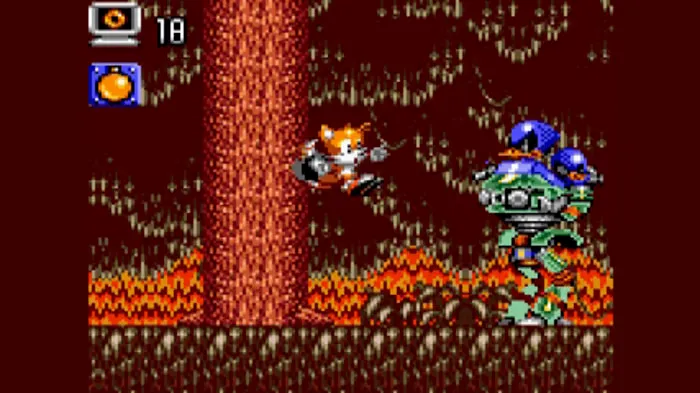This June, Sonic fans will get to relive the series’ most iconic games. Sonic Origins features newly remastered editions of the original Sega Genesis trilogy alongside Sonic CD. For video game historians, it’s an important collection that keeps some of gaming’s most fundamental building blocks properly preserved.
Though, it’s not like those games are hard to find. Games like Sonic the Hedgehog 2 have been released and rereleased dozens of times since the 1990s, coming to seemingly every platform imaginable. The same can’t be said for other, less celebrated Sonic games. Case in point: Tails Adventure. When I was thinking about the Game Gear spinoff starring Miles “Tails” Prower recently, I remembered I had to dig up my Nintendo 3DS and rush to the eShop to make sure I downloaded it before it shuts down for good.
In researching Tails Adventure, I suddenly rediscovered a swath of Sonic games that haven’t gotten the same treatment as the classics. It’s a reminder that video game history is often selectively curated, leaving fascinating pieces of the past buried.
Fading into obscurity
If you’re a Sonic fan and have never heard of Tails Adventure, I don’t blame you. The 1995 platformer was Sega’s only real stab at turning Sonic’s sidekick into a solo hero. Rather than building on the hedgehog’s speedy formula, the more slow-paced platformer plays with Tails’ role as a tinkerer. Taking cues from Metroid, the fox gets a series of tools that open up paths in its stages. He can even control a remote drone that fits into tight spaces, not unlike Samus’ morph ball ability.

For those who didn’t own a Game Gear, there have been three other chances to own it since then. The full game could be unlocked in Sonic Adventure DX and was included in 2005’s Sonic Gems Collection, which featured other rarities. Most recently, the game was available to purchase through the Nintendo 3DS eShop. However, with that digital marketplace coming to a close soon, there won’t be a legal way to buy it anytime soon.
On one hand, it’s perfectly reasonable that Sega wouldn’t be enthusiastic about keeping it available on modern devices. It’s not a particularly memorable platformer and it didn’t give birth to a successful Tails series. If anything, it’s more of an internet curiosity for future Sonic fans to discover.
That’s exactly what makes it special too. It’s an odd relic from an era where Sega was starting to experiment with the Sonic IP. Games like Tails Adventure serve as some of the earliest indications that Sega was struggling to expand on the tried-and-true Sonic formula, an issue that would turn into a central narrative for the series in the 2000s. You can’t get a full picture of video game history without taking the good with the bad.

It’s not just Tails Adventure that’s been trimmed out of Sega’s carefully pruned historical records. None of Sonic’s Game Gear titles are easily available in 2022. That includes hidden gems like Sonic Triple Trouble and the somewhat disastrous Sonic Blast, Sega’s final first-party Game Gear release. The more time goes on, the more we tend to lose curiosities like that as gaming “canon” is boiled down to its key points.
Carefully curated
That kind of industry curation was on full display when Nintendo celebrated Mario’s 35th anniversary last year. The company paid tribute to the series’ biggest hits, even rereleasing Super Mario 64, Super Mario Sunshine, and Super Mario Galaxy on Nintendo Switch. However, several titles didn’t so much as cameo in a Nintendo Direct montage. You wouldn’t know they exist at all if not for the internet.
The PC title Mario’s Game Gallery was my introduction to the character as a kid and the first game to feature Charles Martinet as Mario, yet it’s been virtually scrubbed from existence. Mario’s Time Machine only remains in public consciousness thanks to YouTube longplays. Worst of all, the absolutely bizarre I Am a Teacher: Super Mario Sweater, an educational game that taught players how to knit, is so lost to time that it doesn’t even have its own Wikipedia entry.

All of those games form a story. They paint a clearer picture of how Mario became the recognizable icon he is today. It wasn’t solely because of a few good platformers; it was because Nintendo played the IP fast and loose initially, plastering the plumber’s face across as many games as possible. I didn’t own an NES or SNES growing up, but I still played a Mario game, even though it felt like a bootleg.
When I play a game like Tails Adventure, I feel like I’ve discovered a lost puzzle piece buried in the couch cushions. It deepens my appreciation of a series I love and helps me better understand the full history behind it. With the resurgence of the Sonic franchise in recent years, perhaps Sega will be eager to resell it as part of a triple-dip hidden gems package, but I wish that wasn’t contingent on profitability. Tails Adventure, and games like it, deserve to be preserved and played just as much as the certified classics. Failure is just as informative as success.



